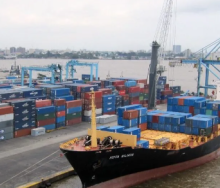Container rates are likely to ease in the second half of 2024 if current conditions persist without major changes, according to the latest market update from Container xChange.
This anticipated reduction in rates could trigger an uptick in container buyer activity, as the buyer side is currently waiting for prices to decline before resuming trading and leasing activities.
The market outlook for the second half of the year is heavily contingent on a revival in consumer demand, the update added.
Several factors will influence this period, including ongoing geopolitical disruptions and potential labour unrest.
Christian Roeloffs, co-founder and CEO of Container xChange, said: “Shippers are pulling shipment dates forward, resulting in a temporary demand for shipping capacity.
“This is reflected in higher throughput volumes, despite underlying consumer demand and factory orders being weak,” he said.
Key economic indicators from the US highlight this trend:
Consumer spending increased by only 2% in Q1 2024, below the advance estimate of
2.5% and marking the lowest increase in three quarters.
Retail inventories, excluding autos, increased by only 0.3% month-over-month in April
2024, following a 0.4% decline in March, indicating cautious restocking by retailers.
New orders for manufactured goods in April rose by $4.3 billion, a 0.7% increase, to
$588.2bn, while shipments increased by $5.9bn or 1%, to $590.2bn, signalling robust
demand in the shipping and container logistics market.
The current spike in container prices appears unsustainable in the long term due to the lack of strong underlying demand.
Concerns over labour markets and high interest rates suggest that consumers are likely to reduce spending, potentially leading to a decline in demand for goods and a subsequent reduction in shipping volumes.
Unless there is a stronger demand revival and increased supply capacity absorption, the market is poised for a correction.
As we move into the second half of 2024, it is crucial for stakeholders in the container shipping market to monitor these economic indicators closely.
The expected stabilisation or decline in container prices will likely impact shipping strategies, inventory management and overall logistics planning.
Adapting to these market dynamics will be essential for maintaining efficiency and competitiveness in the evolving global ocean-freight landscape.













